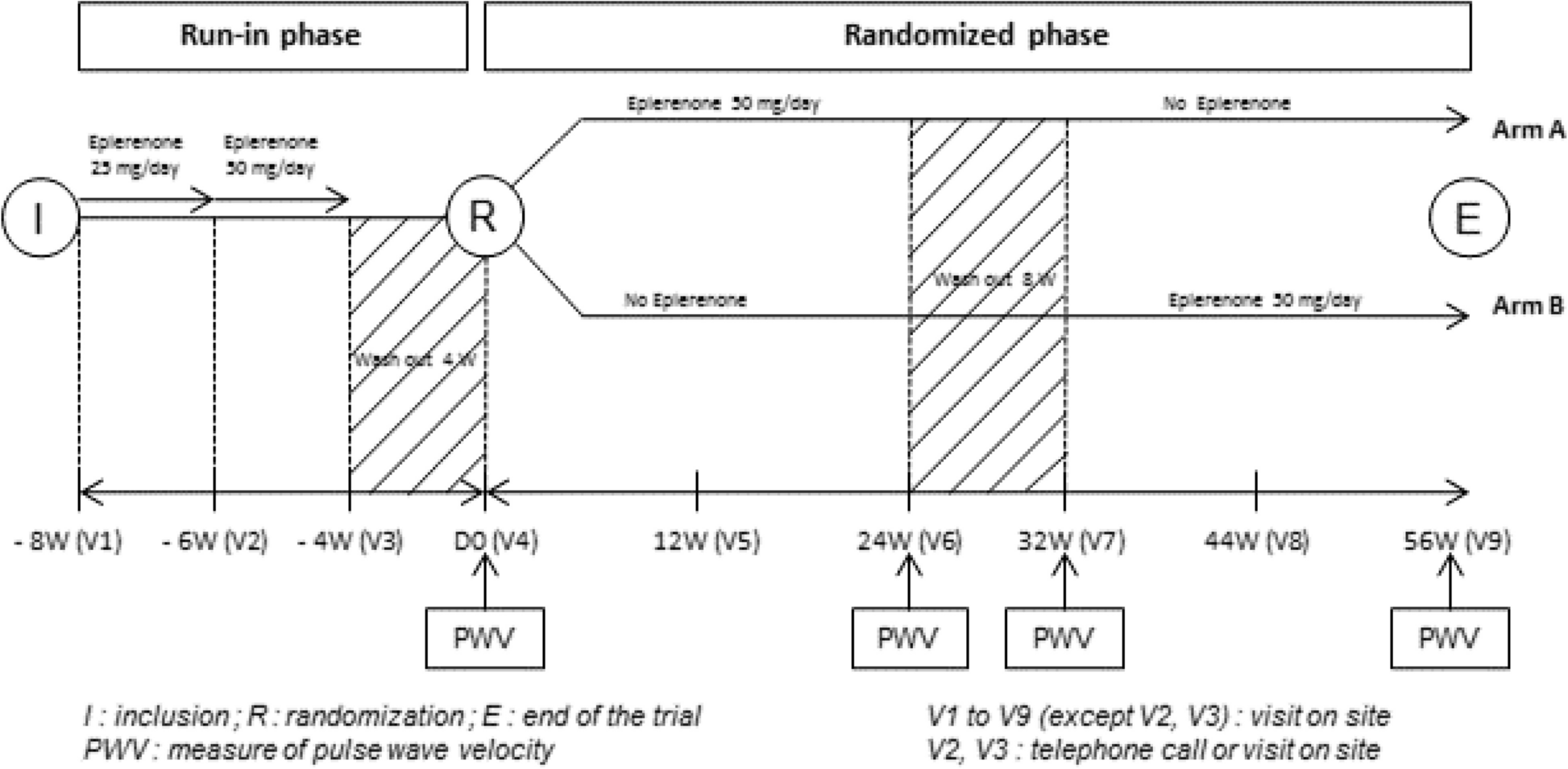If ever a man were destined to design a new Frankenstein, it would surely be Mike Hill. The British-born prosthetics and makeup artist behind Guillermo del Toro’s new Frankenstein movie (in…

If ever a man were destined to design a new Frankenstein, it would surely be Mike Hill. The British-born prosthetics and makeup artist behind Guillermo del Toro’s new Frankenstein movie (in…

As detailed in version 2.0 (dated 22/06/2022) of the protocol, this study is a prospective, monocentric, randomized crossover blinded endpoint study (PROBE) conducted at Nancy University Hospital. Renal transplant patients on…

China’s Mars orbiter, Tianwen-1, has successfully observed the rare interstellar…

Gemma Sherlock and
Gary Philipson,North East and Cumbria
 BBC
BBCAn organiser of a popular music festival says he is being forced to cancel next year’s event due to spiralling costs.
Hardwick…

Lauren Graham on ‘Gilmore Girls’ legacy at 2025 Emmy Awards
On the 2025 Emmy Awards red carpet Lauren Graham says it is an honor that “Gilmore Girls” still resonates with fans 25 years later and shares she’s watching Adam Brody’s “Nobody Wants…

Some triumphs become turning points; others become touchstones of belief.
For Balwinder Singh Sandhu, one of the heroes of India’s 1983 World Cup win, watching Harmanpreet Kaur lift the Women’s World Cup 2025 trophy at DY Patil Stadium was…

Anyone turning 25 this week has never known a time when humans weren’t living in space. The same might not be true when they’re 30.
On November 2, 2000, the first crew docked with the International Space Station. Commander Bill Shepherd and…

07/11/2025
402 views
9 likes
As the United Nations COP30 climate change conference convenes in Belém, Brazil, the world’s attention will turn to the heart of the Amazon rainforest –…

MEXICO CITY — The groping of Mexico President Claudia Sheinbaum on a downtown street shone a bright light on the gender violence women face every day, but the country’s political polarization has tarnished what under other circumstances would…

Acharya, A., Steiner, J. F., Walizada, K. M., Ali, S., Zakir, Z. H., Caiserman, A., and Watanabe, T.: Review article: Snow and ice avalanches in high mountain Asia – scientific, local and indigenous knowledge, Nat. Hazards Earth Syst. Sci., 23, 2569–2592, https://doi.org/10.5194/nhess-23-2569-2023, 2023. a
Afendras, G. and Markatou, M.: Optimality of training/test size and resampling effectiveness in cross-validation, Journal of Statistical Planning and Inference, 199, https://doi.org/10.1016/j.jspi.2018.07.005, 2019. a
Ahsan, M., Khan, A., Khan, K. R., Sinha, B. B., and Sharma, A.: Advancements in medical diagnosis and treatment through machine learning: a review, Expert Syst., 41, e13499, https://doi.org/10.1111/exsy.13499, 2024. a
Amin, G., Imtiaz, I., Haroon, E., Saqib, N. U., Shahzad, M. I., and Nazeer, M.: Assessment of machine learning algorithms for land cover classification in a complex mountainous landscape, Journal of Geovisualization and Spatial Analysis, 8, 34, https://doi.org/10.1007/s41651-024-00195-z, 2024. a
Bakkehøi, S., Domaas, U., and Lied, K.: Calculation of snow avalanche runout distance, Ann. Glaciol., 4, 24–29, https://doi.org/10.3189/S0260305500005188, 1983. a
Bhattacharyya, S.: Confidence in predictions from random tree ensembles, in: 2011 IEEE 11th International Conference on Data Mining, iSSN 2374–8486, https://doi.org/10.1109/ICDM.2011.41, 71–80, 2011. a
Bischl, B., Binder, M., Lang, M., Pielok, T., Richter, J., Coors, S., Thomas, J., Ullmann, T., Becker, M., Boulesteix, A.-L., Deng, D., and Lindauer, M.: Hyperparameter optimization: foundations, algorithms, best practices, and open challenges, WIREs Data Mining and Knowledge Discovery, 13, e1484, https://doi.org/10.1002/widm.1484, 2023. a
Breiman, L.: Random forests, Mach. Learn., 45, 5–32, https://doi.org/10.1023/A:1010933404324, 2001. a, b, c
Bühler, Y., Kumar, S., Veitinger, J., Christen, M., Stoffel, A., and Snehmani: Automated identification of potential snow avalanche release areas based on digital elevation models, Nat. Hazards Earth Syst. Sci., 13, 1321–1335, https://doi.org/10.5194/nhess-13-1321-2013, 2013. a, b
Bühler, Y., von Rickenbach, D., Stoffel, A., Margreth, S., Stoffel, L., and Christen, M.: Automated snow avalanche release area delineation – validation of existing algorithms and proposition of a new object-based approach for large-scale hazard indication mapping, Nat. Hazards Earth Syst. Sci., 18, 3235–3251, https://doi.org/10.5194/nhess-18-3235-2018, 2018. a, b
Campbell, C. and Gould, B.: A proposed practical model for zoning with the avalanche terrain exposure scale, in: Proceedings, International Snow Science Workshop 2013, Grenoble, France, https://arc.lib.montana.edu/snow-science/objects/ISSW13_paper_P5-02.pdf (last access: 1 April 2025), 2013. a
Cetinkaya, S. and Kocaman, S.: IMPACT OF LEARNING SET AND SAMPLING FOR SNOW AVALANCHE SUSCEPTIBILITY MAPPING WITH RANDOM FOREST, Int. Arch. Photogramm. Remote Sens. Spatial Inf. Sci., XLVIII-M-1-2023, 57–64, https://doi.org/10.5194/isprs-archives-XLVIII-M-1-2023-57-2023, 2023. a
Contreras, P., Orellana-Alvear, J., Muñoz, P., Bendix, J., and Célleri, R.: Influence of random forest hyperparameterization on short-term runoff forecasting in an Andean mountain catchment, Atmosphere-Basel, 12, 238, https://doi.org/10.3390/atmos12020238, 2021. a, b
Copernicus: Tree Cover Density 2018 (raster 10 m and 100 m), Europe, 3-yearly, European Environment Agency (EEA) [data set], https://doi.org/10.2909/486f77da-d605-423e-93a9-680760ab6791, 2020. a
D’Amboise, C., Teich, M., Hormes, A., Steger, S., and Berger, F.: Modeling protective forests for gravitational natural hazards and how it relates to risk-based decision support tools, in: Protective Forests as Ecosystem-based Solution for Disaster Risk Reduction (ECO-DRR), IntechOpen, London, https://doi.org/10.5772/intechopen.99510, 2021. a, b
D’Amboise, C. J. L., Neuhauser, M., Teich, M., Huber, A., Kofler, A., Perzl, F., Fromm, R., Kleemayr, K., and Fischer, J.-T.: Flow-Py v1.0: a customizable, open-source simulation tool to estimate runout and intensity of gravitational mass flows, Geosci. Model Dev., 15, 2423–2439, https://doi.org/10.5194/gmd-15-2423-2022, 2022. a, b, c, d, e
Dankan Gowda, V., Pathak, D., Prasad, K. D. V., Srinivas, V., Manu, Y. M., and Sudhakar Reddy, N.: Scalable machine learning frameworks for large-scale multimodal image and speech signal processing, in: 2024 8th International Conference on I-SMAC (IoT in Social, Mobile, Analytics and Cloud) (I-SMAC), ISSN 2768-0673, https://doi.org/10.1109/I-SMAC61858.2024.10714812, 1693–1699, 2024. a
Dutta, S., Arunachalam, A., and Misailovic, S.: To seed or not to seed? An empirical analysis of usage of seeds for testing in machine learning projects, in: 2022 IEEE Conference on Software Testing, Verification and Validation (ICST), IEEE, Valencia, Spain, https://doi.org/10.1109/ICST53961.2022.00026, 151–161, 2022. a
Engeset, R. V., Pfuhl, G., Landrø, M., Mannberg, A., and Hetland, A.: Communicating public avalanche warnings – what works?, Nat. Hazards Earth Syst. Sci., 18, 2537–2559, https://doi.org/10.5194/nhess-18-2537-2018, 2018. a
Gavaldã, J., Moner, I., and Bacardit, M.: Integrating the ATES into the avalanche information in Aran Valley (Central Pyrenees), in: Proceedings, International Snow Science Workshop 2013, Grenoble, France, https://arc.lib.montana.edu/snow-science/objects/ISSW13_paper_P5-01.pdf (1 May 2025), 2013. a
Gong, Y., Liu, G., Xue, Y., Li, R., and Meng, L.: A survey on dataset quality in machine learning, Inform. Software Tech., 162, https://doi.org/10.1016/j.infsof.2023.107268, 2023. a
Harvey, S., Schmudlach, G., Bühler, Y., Dürr, L., Stoffel, A., and Christen, M.: Avalanche terrain maps for backcountry skiing in Switzerland, in: Proceedings, International Snow Science Workshop, Innsbruck, Austria, Innsbruck, Austria, 1625–1631, https://arc.lib.montana.edu/snow-science/objects/ISSW2018_O19.1.pdf (last access: 12 February 2025), 2018. a
Harvey, S., Christen, M., Bühler, Y., Hänni, C., Boos, N., and Bernegger, B.: Refined Swiss avalanche terrain mapping CATV2/ATHV2, in: Proceedings, International Snow Science Workshop, Tromsø, Norway, 2024, Tromsø, Norway, 1637–1644, https://arc.lib.montana.edu/snow-science/item/3363 (last access: 17 April 2025), 2024. a
Hesselbach, C.: Adaptation and Application of an Automated Avalanche Terrain Classification in Austria, Master’s thesis, University of Natural Resources and Life Sciences, Vienna, https://permalink.obvsg.at/bok/AC16964320 (last access: 22 April 2025), 2023. a, b, c
Horn, B. K. P.: Hillshading and the reflectance map, P. IEEE, 69, 14–47, https://doi.org/10.1109/proc.1981.11918, 1981. a
Huber, A., Hesselbach, C., Oesterle, F., Neuhauser, M., Adams, M., Plörer, M., Stephan, L., Toft, H., Sykes, J., Mitterer, C., and Fischer, J.-T.: AutoATES Austria – testing and application of an automated model-chain for avalanche terrain classification in the Austrian Alps, in: Proceedings, International Snow Science Workshop, Bend, OR, USA, 2023, Innsbruck, Austria, 1272–1278, http://arc.lib.montana.edu/snow-science/item/2989 (last access: 16 March 2025), 2023. a, b, c, d, e, f, g, h, i
Huber, A., Saxer, L., Spannring, P., Hesselbach, C., Neuhauser, M., D’Amboise, C., and Teich, M.: Regional-scale avalanche modeling with com4FlowPy – potential and limitations for considering avalanche-forest interaction along the avalanche track, in: Proceedings, International Snow Science Workshop, Tromsø, Norway, 2024, 587–594, https://arc.lib.montana.edu/snow-science/item.php?id=3194 (last access: 10 February 2025), 2024. a, b, c, d
Jaiswal, J. K. and Samikannu, R.: Application of random forest algorithm on feature subset selection and classification and regression, in: World Congress on Computing and Communication Technologies (WCCCT), https://doi.org/10.1109/wccct.2016.25, 2017. a
Japkowicz, N.: Concept-learning in the presence of between-class and within-class imbalances, in: Advances in Artificial Intelligence, edited by: Stroulia, E. and Matwin, S., Springer, Berlin, Heidelberg, https://doi.org/10.1007/3-540-45153-6_7, 67–77, 2001. a
Joseph, V. R.: Optimal ratio for data splitting, Statistical Analysis and Data Mining: The ASA Data Science Journal, 15, 531–538, https://doi.org/10.1002/sam.11583, 2022. a
Körner, H. J.: The energy-line method in the mechanics of avalanches, J. Glaciol., 26, 501–505, https://doi.org/10.3189/S0022143000011023, 1980. a
Larsen, H. T., Hendrikx, J., Slåtten, M. S., and Engeset, R. V.: Developing nationwide avalanche terrain maps for Norway, Nat. Hazards, 103, 2829–2847, https://doi.org/10.1007/s11069-020-04104-7, 2020. a, b, c, d, e, f, g, h
Markov, K.: kalinmarkov95/machine-learning-auto-ates: Implement Random Forest (RF) for automated ATES classification, Zenodo [code], https://doi.org/10.5281/zenodo.15310357, 2025. a, b
Markov, K. and Ivanov, I.: Avalanche Hazard Assessment and Modeling in Pirin National Park, LOPS Foundation, Sofia, Bulgaria, https://lopsbg.com/wp-content/uploads/2021/09/%D0%9A%D0%B0%D0%BB%D0%B8%D0%BD-%D0%9C%D0%B0%D1%80%D0%BA%D0%BE%D0%B2_%D0%98%D0%B2%D0%B0%D0%BD-%D0%98%D0%B2%D0%B0%D0%BD%D0%BE%D0%B2.pdf (last access: 30 March 2025), 2021. a
Markov, K. and Panayotov, M.: Defining of avalanche terrain with ATES modelling for the region of Bansko Ski Resort in Pirin, in: Avalanches in the Bunderitsa valley in Pirin Mountains, Intel Entrans, Sofia, ISBN 978-619-7703-60-3, 2024. a, b
Markov, K., Panayotov, M., Tcherkezova, E., and Teich, M.: Identifying and mapping avalanche terrain using the ATES model for the region around Bansko Ski Resort, Pirin, Forest Science (Nauka za Gorata), 60, 99–122, 2024. a
Markov, K., Panayotov, M., Tcherkezova, E., and Huber, A.: Influence of forest canopy cover on automated Avalanche Terrain Exposure Scale classification in the Pirin Mountains, Bulgaria, Forestry Ideas, 31, 170–187, https://forestry-ideas.info/issues/issues_Download.php?download=557 (last access: 30 October 2025), 2025. a
McClung, D. and Gauer, P.: Maximum frontal speeds, alpha angles and deposit volumes of flowing snow avalanches, Cold Reg. Sci. Technol., 153, 78–85, https://doi.org/10.1016/j.coldregions.2018.04.009, 2018. a
Nasteski, V.: An overview of the supervised machine learning methods, Horizons, 4, 51–62, https://www.researchgate.net/publication/328146111_An_overview_of_the_supervised_machine_learning_methods (last access: 29 October 2025), 2017. a, b
Oesterle, F., Wirbel, A., Fischer, J.-T., Huber, A., and Spannring, P.: avaframe/AvaFrame: 1.11, Zenodo [code], https://doi.org/10.5281/zenodo.14893015, 2025. a
Panayotov, M. and Tsvetanov, N.: Dating of avalanches in Pirin mountains in Bulgaria by tree-ring analysis of Pinus peuce and Pinus heldriechii trees, Dendrochronologia, 85, 126206, https://doi.org/10.1016/j.dendro.2024.126206, 2024. a
Panayotov, M., Menteshev, B., and Mihaylova, S.: Avalanches in Bulgaria, BEFSA, ISBN 978-619-188-515-2, 2021. a, b, c
Panayotov, M., Christen, M., Bebi, P., and Bartelt, P.: Simulation of avalanches in Bunderitsa valley with the RAMMS software, in: Avalanches in the Bunderitsa valley in Pirin Mountains, Intel Entrans, Sofia, ISBN 978-619-7703-60-3, 2024a. a
Panayotov, M., Markov, K., Tsvetanov, N., Huber, A., Hesselbach, C., and Teich, M.: Avalanche hazard mapping using the avalanche terrain exposure scale (ATES) in the high mountain ranges of Bulgaria, in: Proceedings, International Snow Science Workshop 2024, Tromsø, Norway, https://arc.lib.montana.edu/snow-science/objects/ISSW2024_P12.5.pdf (last access: 21 April 2025), 2024b. a, b, c, d, e, f, g, h, i, j, k, l, m, n, o, p, q, r
Pandey, S., Chand, S., Horkoff, J., Staron, M., Ochodek, M., and Durisic, D.: Design pattern recognition: a study of large language models, Empir. Softw. Eng., 30, https://doi.org/10.1007/s10664-025-10625-1, 2025. a
Parks Canada Agency: Avalanche Terrain Exposure Scale – Avalanche Terrain Exposure Scale, Government of Canada, https://parks.canada.ca/pn-np/bc/glacier/visit/hiver-winter/ski/ates (last access: 29 October 2025), 2017. a
Pedregosa, F., Varoquaux, G., Gramfort, A., Michel, V., Thirion, B., Grisel, O., Blondel, M., Prettenhofer, P., Weiss, R., Dubourg, V., Vanderplas, J., Passos, A., Cournapeau, D., Brucher, M., Perrot, M., and Duchesnay, E.: Scikit-learn: machine learning in Python, J. Mach. Learn. Res, 12, 2825–2830, 2011. a
Pirin National Park: Pirin National Park – World Heritage Property of Unesco, https://www.pirin.bg/?p=5591#more-5591 (last access: 28 August 2025), 2022. a, b
Prasetiyowati, M. I., Maulidevi, N. U., and Surendro, K.: Determining threshold value on information gain feature selection to increase speed and prediction accuracy of random forest, Journal of Big Data, 8, 84, https://doi.org/10.1186/s40537-021-00472-4, 2021. a
Probst, P., Wright, M., and Boulesteix, A.-L.: Hyperparameters and tuning strategies for random forest, WIREs Data Mining and Knowledge Discovery, 9, e1301, https://doi.org/10.1002/widm.1301, 2019. a, b
Pugliese, R., Regondi, S., and Marini, R.: Machine learning-based approach: global trends, research directions, and regulatory standpoints, Data Science and Management, 4, 19–29, https://doi.org/10.1016/j.dsm.2021.12.002, 2021. a
Python Software Foundation: Python Language Reference, version 3.9.21 [code], https://www.python.org/ (last access: 22 March 2025), 2024. a
Rainio, O., Teuho, J., and Klén, R.: Evaluation metrics and statistical tests for machine learning, Sci. Rep.-UK, 14, 6086, https://doi.org/10.1038/s41598-024-56706-x, 2024. a, b, c
Ramadhan, M., Sitanggang, I., Nasution, F., and Ghifari, A.: Parameter tuning in random forest based on grid search method for gender classification based on voice frequency, DEStech Transactions on Computer Science and Engineering, https://doi.org/10.12783/dtcse/cece2017/14611, 2017. a
Rimal, Y., Sharma, N., and Alsadoon, A.: The accuracy of machine learning models relies on hyperparameter tuning: student result classification using random forest, randomized search, grid search, bayesian, genetic, and optuna algorithms, Multimed. Tools Appl., 83, 74349–74364, https://doi.org/10.1007/s11042-024-18426-2, 2024. a
Rogers, J. and Gunn, S.: Identifying feature relevance using a random forest, in: SLSFS: International Statistical and Optimization Perspectives Workshop “Subspace, Latent Structure and Feature Selection”, edited by: Saunders, C., Grobelnik, M., Gunn, S., and Shawe-Taylor, J., Springer, Berlin, Heidelberg, https://doi.org/10.1007/11752790_12, 173–184, 2006. a
Salman, H. A., Kalakech, A., and Steiti, A.: Random forest algorithm overview, Babylonian Journal of Machine Learning, 2024, 69–79, https://doi.org/10.58496/BJML/2024/007, 2024. a, b
Saraswat, P.: Supervised machine learning algorithm: a review of classification techniques, Smart Innovation, Systems and Technologies, 273, 477–482, https://doi.org/10.1007/978-3-030-92905-3_58, 2022. a
Sarker, I. H.: Machine learning: algorithms, real-world applications and research directions, SN Computer Science, 2, 160, https://doi.org/10.1007/s42979-021-00592-x, 2021. a
Schmudlach, G. and Köhler, J.: Method for an automatized avalanche terrain classification, in: Proceedings, International Snow Science Workshop, Breckenridge, Colorado, 2016, Breckenridge, Colorado, 729–736, https://arc.lib.montana.edu/snow-science/objects/ISSW16_P2.04.pdf (last access: 7 April 2025), 2016. a
Schumacher, J., Toft, H., McLean, J. P., Hauglin, M., Astrup, R., and Breidenbach, J.: The utility of forest attribute maps for automated Avalanche Terrain Exposure Scale (ATES) modelling, Scand. J. Forest Res., 37, 264–275, https://doi.org/10.1080/02827581.2022.2096921, 2022. a, b, c, d, e
Schweizer, J. and Lüschg, M.: Characteristics of human-triggered avalanches, Cold Reg. Sci. Technol., 33, 147–162, https://doi.org/10.1016/S0165-232X(01)00037-4, 2001. a
Schweizer, J., Bartelt, P., and van Herwijnen, A.: Snow avalanches in: Snow and Ice-Related Hazards, Risks and Disasters, Elsevier, https://doi.org/10.1016/b978-0-12-394849-6.00012-3, 395–436, 2015. a
Sharp, A. E. A.: Evaluating the exposure of heliskiing ski guides to avalanche terrain using a fuzzy logic avalanche susceptibility model, Masters’ thesis, University of Leeds, School of Geography, https://doi.org/10.13140/RG.2.2.18673.94567, 2018. a
Sharp, E., Campbell, C., Statham, G., and Schroers, B.: A standardized, multiscale, fuzzy spatialdata model for a Avalanche Terrain Exposure Scale mapping, in: Proceedings, International Snow Science Workshop, Bend, Oregon, 2023, 838–845, http://arc.lib.montana.edu/snow-science/item/2974 (last access: 5 April 2025), 2023. a
Siji George, G. C. and Sumathi, B.: Grid search tuning of hyperparameters in random forest classifier for customer feedback sentiment prediction, International Journal of Advanced Computer Science and Applications, 11, https://doi.org/10.14569/IJACSA.2020.0110920, 2020. a
Spannring, P.: Comparison of two avalanche terrain classification approaches: Avalanche Terrain Exposure Scale – Classified Avalanche Terrain, Master’s thesis, University of Innsbruck, Faculty of Geo- and Atmospheric Sciences, https://resolver.obvsg.at/urn:nbn:at:at-ubi:1-155858 (last access: 30 October 2025), 2024. a
Statham, G. and Campbell, C.: The Avalanche Terrain Exposure Scale (ATES) v.2, Nat. Hazards Earth Syst. Sci., 25, 1113–1137, https://doi.org/10.5194/nhess-25-1113-2025, 2025. a, b, c, d, e, f
Statham, G., McMahon, B., and Tomm, I.: The Avalanche Terrain Exposure Scale, in: Proceedings, International Snow Science Workshop 2006, Telluride, Colorado, https://arc.lib.montana.edu/snow-science/objects/issw-2006-491-497.pdf (last access: 5 May 2025), 2006. a, b, c
Sykes, J., Toft, H., Haegeli, P., and Statham, G.: Automated Avalanche Terrain Exposure Scale (ATES) mapping – local validation and optimization in western Canada, Nat. Hazards Earth Syst. Sci., 24, 947–971, https://doi.org/10.5194/nhess-24-947-2024, 2024. a, b, c, d, e, f, g, h, i, j, k, l, m, n, o, p, q
Techel, F. and Zweifel, B.: Recreational avalanche accidents in Switzerland: trends and patterns with an emphasis on burial, rescue methods and avalanche danger, in: Proceedings International Snow Science Workshop 2013, Grenoble, France, https://arc.lib.montana.edu/snow-science/item.php?id=1844 (last access: 4 April 2025), 2013. a
Techel, F., Jarry, F., Kronthaler, G., Mitterer, S., Nairz, P., Pavšek, M., Valt, M., and Darms, G.: Avalanche fatalities in the European Alps: long-term trends and statistics, Geogr. Helv., 71, 147–159, https://doi.org/10.5194/gh-71-147-2016, 2016. a
Toft, H. B., Sykes, J., Schauer, A., Hendrikx, J., and Hetland, A.: AutoATES v2.0: Automated Avalanche Terrain Exposure Scale mapping, Nat. Hazards Earth Syst. Sci., 24, 1779–1793, https://doi.org/10.5194/nhess-24-1779-2024, 2024. a, b, c, d, e, f, g, h, i, j, k, l, m, n, o, p, q, r, s, t, u, v, w, x, y
Tonnel, M., Wirbel, A., Oesterle, F., and Fischer, J.-T.: AvaFrame com1DFA (v1.3): a thickness-integrated computational avalanche module – theory, numerics, and testing, Geosci. Model Dev., 16, 7013–7035, https://doi.org/10.5194/gmd-16-7013-2023, 2023. a
Tsvetanov, N. and Panayotov, M.: Dendrochronological reconstruction of large magnitude avalanches in Bunderitsa valley, in: Avalanches in the Bunderitsa valley in Pirin Mountains, Intel Entrans, Sofia, ISBN 978-619-7703-60-3, 2024. a, b
Ul Hassan, C. A., Khan, M. S., and Shah, M. A.: Comparison of machine learning algorithms in data classification, in: International Conference on Automation and Computing (ICAC), https://doi.org/10.23919/IConAC.2018.8748995, 2018. a
Varoquaux, G. and Colliot, O.: Evaluating machine learning models and their diagnostic value, in: Machine Learning for Brain Disorders, Springer US, ISBN 978-1-0716-3195-9, 2023. a, b, c
Veitinger, J., Purves, R. S., and Sovilla, B.: Potential slab avalanche release area identification from estimated winter terrain: a multi-scale, fuzzy logic approach, Nat. Hazards Earth Syst. Sci., 16, 2211–2225, https://doi.org/10.5194/nhess-16-2211-2016, 2016a. a, b
Veitinger, J., Sovilla, B., and Purves, R. S.: Model code of release area algorithm [code], https://github.com/jocha81/Avalanche-release (last access: 30 October 2025), 2016b. a, b
Venkadesh, P., S. V., D., Marymariyal, P., and Keerthana, S.: Predicting Natural Disasters With AI and Machine Learning, IGI Global Scientific Publishing, https://doi.org/10.4018/979-8-3693-3362-4.ch003, 2024. a
Viallon-Galinier, L., Hagenmuller, P., and Eckert, N.: Combining modelled snowpack stability with machine learning to predict avalanche activity, The Cryosphere, 17, 2245–2260, https://doi.org/10.5194/tc-17-2245-2023, 2023. a
von Avis, C. D., Sykes, J. M., and Tutt, B.: Development of large scale automated Avalanche Terrain Exposure Scale (ATES) ratings in collaboration with local avalanche experts, in: Proceedings, International Snow Science Workshop 2023, Bend, Oregon, 982–988, http://arc.lib.montana.edu/snow-science/item/2998 (last access: 12 April 2025), 2023. a, b
Wang, S., Zhuang, J., Zheng, J., Fan, H., Kong, J., and Zhan, J.: Application of Bayesian hyperparameter optimized random forest and XGBoost model for landslide susceptibility mapping, Front. Earth Sci., 9, https://doi.org/10.3389/feart.2021.712240, 2021. a
Werners, B.: Aggregation models in mathematical programming, in: Mathematical Models for Decision Support, Vol. 48 of NATO ASI Series, Springer, Berlin, Heidelberg, 295–305, https://doi.org/10.1007/978-3-642-83555-1_19, 1988. a
Yolanda, A., Adnan, A., Ell Goldameir, N., and Rizalde, F.: The comparison of accuracy on classification data with machine learning algorithms (case study: human development index by regency/city in Indonesia 2020), in: AIP Conference Proceedings, https://doi.org/10.1063/5.0118720, 2023. a